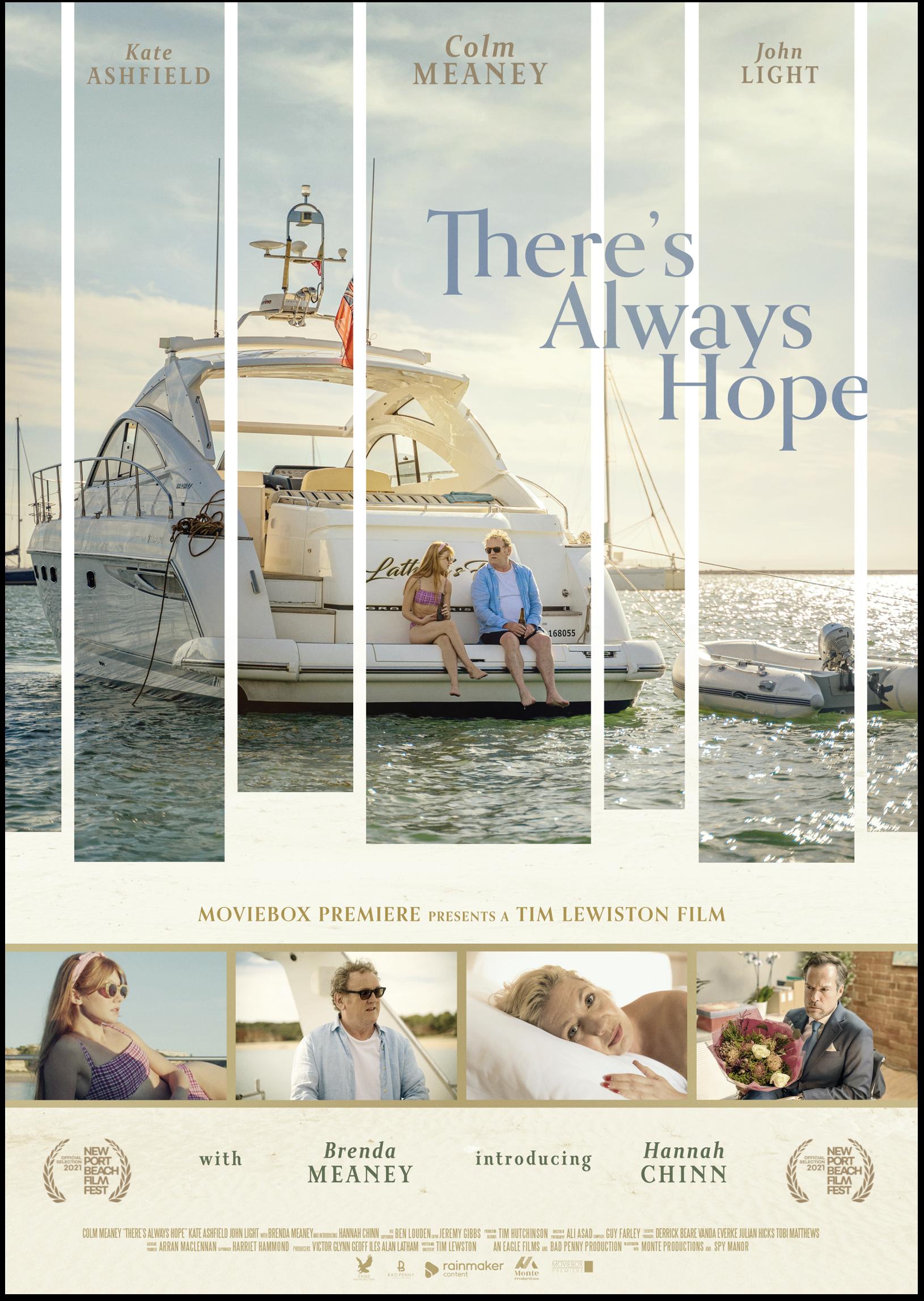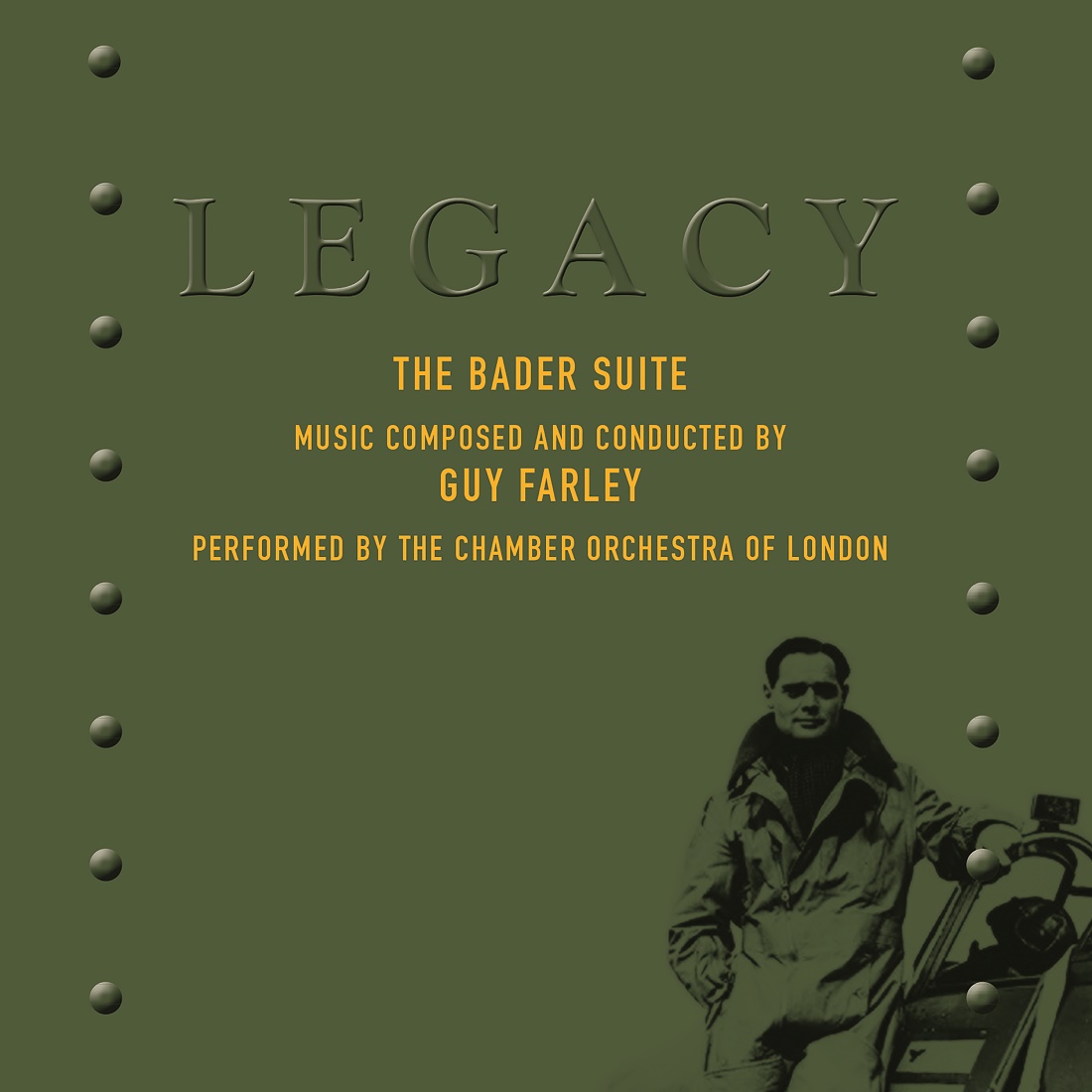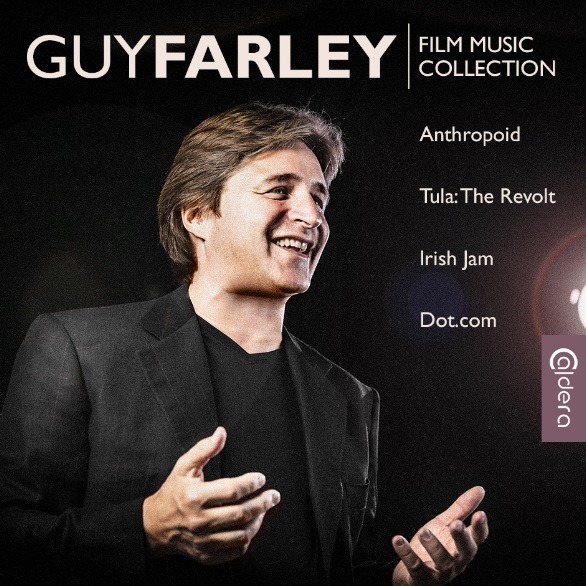|
“Given Freedom, I Can Write Good Music” - Part
1
Interview with Guy Farley conducted on 3rd March 2012 in Sphere
Studios, London
by Stephan Eicke
Stephan
Eicke: Guy, when we first met in late
October 2011, you mentioned that you had just finished
recording your music for the new caper-movie “The Hot
Potato”.
Guy
Farley
: Yes, but I haven’t finished mastering
it yet because I haven’t got any time to do it but it’s the
next thing I’ll do. The score is about to be put into a
soundtrack-order and I like to do this work myself because I
want to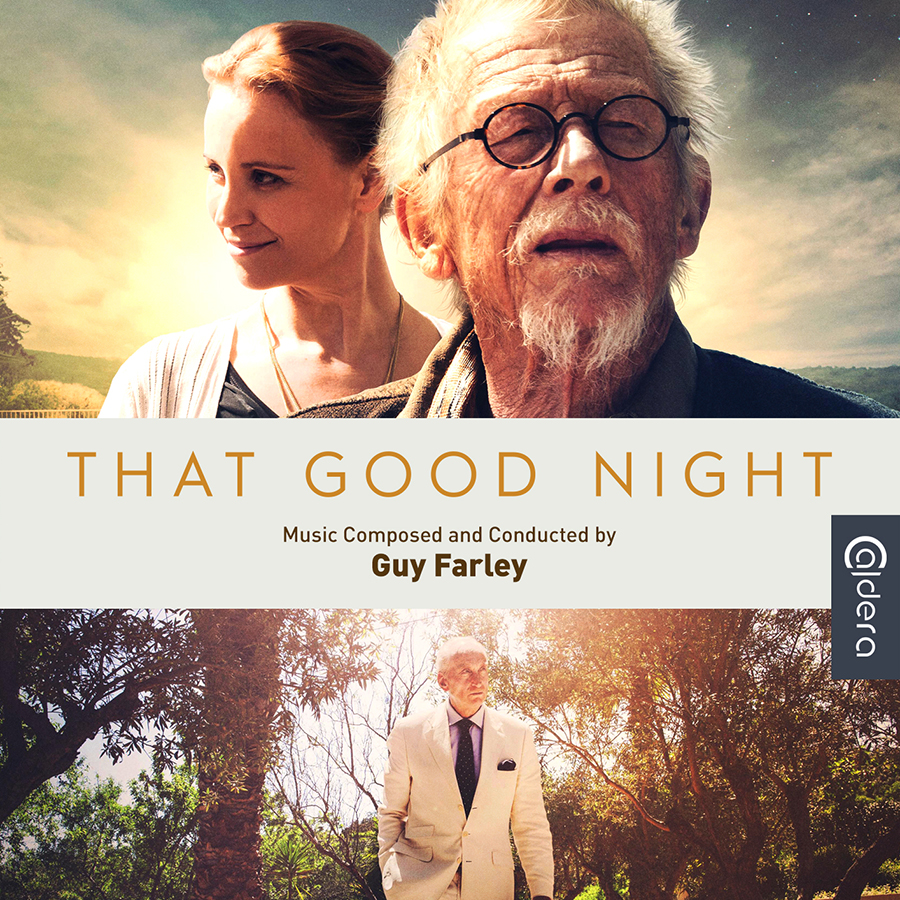 make sure that it
also makes a good listening-experience. “The Hot Potato” is a
very generic score because it has a sound from the 60s in the
style of John Barry or Henry Mancini. I loved writing that and
I knew what I was writing. I remember saying to the director
“If we were in 1968 and you would got John Barry to write the
score, that’s what I want it to sound like.” And the director
was absolutely crazy about that idea and let me do my thing. make sure that it
also makes a good listening-experience. “The Hot Potato” is a
very generic score because it has a sound from the 60s in the
style of John Barry or Henry Mancini. I loved writing that and
I knew what I was writing. I remember saying to the director
“If we were in 1968 and you would got John Barry to write the
score, that’s what I want it to sound like.” And the director
was absolutely crazy about that idea and let me do my thing.
Q
:
I read the synopsis of the movie and it reminded me a
bit of “The Italian Job” with Michael
Caine.
G.
F.: Yes, although it’s
based on a true story. It’s about these men who find a very
expensive silver box which nobody else sees. In it they find
something covered in led, that looks like a hot potato. They
discover that it’s uranium. The first thing they think is that
they are going to die because they will get cancer and the
second thing is that they say: “We will die anyway, so let’s
try to make some money out of it.” It literally takes them
from seeing the local gangsters to Europe, thinking this is
not worth more than some thousand pounds and in the end they
look at 30 million pounds because they are so many interested
parties. It’s a fun movie and quite Pink-Panther’ish as well.
You remember the old car chase in “The Italian Job”? There is
a lot of that sort of humor in it.
Q
:
It sounds rather dramatic when they know they will get
cancer and that they will die…
G. F.: One
of the first things that you are faced with is when the older
man, played by Ray Winstone, says to his younger colleague “I
have some very bad news: this is uranium and it is used for
nuclear weapons. We have been exposed to it. It will kill us.”
You very quickly forget that because the film takes off and
you go with these ordinary guys who can have their lives
suddenly totally transformed by an enormous amount of money.
Q
:
So they know that they will die and despite that, they
try to make as much money as
possible?
G.
F.: Yes, for their
families. One of them is already married and the other one is
going to get married. However, you don’t really think about
that seriousness until the end of the film and remember that
this is all based on a true story.
Q
:
I never heard of that.
G. F.:
Neither had I.
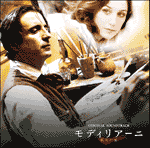 Q
:
The director, Tim Lewiston, worked as a mixer at the
sound department of “Modigliani”. Q
:
The director, Tim Lewiston, worked as a mixer at the
sound department of “Modigliani”.
G. F.: Yes,
that’s how I first met him. He always wanted to graduate from
mixing and the sound-design and he always wanted to direct
movies. He had a lot of input on “Modigliani” and I enjoyed
working with him. After that, he worked on a movie which was
directed by John Irving and unfortunately, they had to work
with a Spanish composer. I would have loved to work with John
Irving but then “The Hot Potato” came about and originally,
they didn’t want to have a score at all but use songs from the
60s. As it often goes, you start with a certain idea and it
goes in a certain direction where you notice: “Hang on, we
have to tell a story here and we need the music to tell a
story.” So in the end, they decided to have an original score.
Q
:
Because of the fact that Tim Lewiston worked at the
sound department, he know how important music is and how do
handle it correctly.
G. F.: Absolutely! He fought all
the way to the end to make sure that we have a proper score. I
said to Tim: “There are a number of ways how you can do this
but the best way is to record the music at Abbey Road with the
best musicians that already played on the original scores from
the 60s. If we do that, it will elevate your film because the
sound will be amazing!” And even when people came to Tim and
said: “Maybe we should just use a few samples and a few
players”, he said very directly: “No, I want this to be the
real thing!” Tim did an amazing job as a director because he
pulled this movie together and made it all happen. He was
restless and fought for the money for the score. Making
independent movies is such a tough job. I don’t know how they
do it. It was very pleasant working with Tim because he is
very old-school. He loves great movies and great music, so he
was able to tell very quickly when he liked something or not.
He just knew it and that makes your life so much easier!
He used to say to
me that the highlight of his week was when I would turn up
with a new piece of music. Fortunately, they didn’t use any
temp-music because they couldn’t find anything that worked!
Q
:
This is surprising, because there are countless
jazz-pieces from the 60s.
G. F.: All
the pieces by John Barry or Henry Mancini were so strongly
identified with their own films they couldn’t use them as
temp-music. What a dream for a composer: no temp-music! It
means so many things! It means that the filmmakers are not
married to certain pieces of music, that they are not telling
you: “That doesn’t sound like the temp-music. Can you write a
piece like this?” It means that I’m free to write to picture
to tell the story as a composer. Another positive thing is
that when I do give them an idea on a piano as a demo, they
are very pleased to hear something real. I had times when I
was asked to score a movie and they had put music by Thomas
Newman on the film. I turned around to them and said: “Guys,
you have a complete budget of 30 000 Dollars on this movie and
you are telling me to write music that had a budget of one
million Dollars? Watch your movie without the temp-music. See
what it looks like without the aid of temp-music.” Temp-music
is a good and simple way to communicate between the director
and the composer: “I like that instrument! I like that chord!
Is that a major or a minor chord?” In that case it is okay
because it saves time. It is a problem when everybody gets
used to it. You can’t beat it. I have known directors who
said: “Can’t you just copy the temp-music?” That’s one of the
worst things you can ever hear! I remember working on a film
where I found myself sitting at the keyboard and looking for
the same sound that was heard in the temp-track instead of
looking for something new. I stopped myself and asked myself:
“What am I doing here? This is absolutely mad!”
Q
:
So you quit the job on that
film?
G.
F.: I didn’t quit the
job but I stopped myself and composed something different.
Imitating the temp-music is very unpleasant because you stop
being a composer. You wound up being a copyist or a
machine-man.
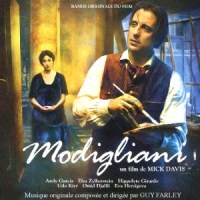 Q
:
I would like to talk with you about “Modigliani” in
detail because I think that it is still your best score. Is
that a compliment or would you prefer hearing that every new
score you compose is the best you have ever
done? Q
:
I would like to talk with you about “Modigliani” in
detail because I think that it is still your best score. Is
that a compliment or would you prefer hearing that every new
score you compose is the best you have ever
done?
G.
F.: No, because you have different experiences
on every film. Being realistic, every composer writes a bad
score. Every composer writes a good score. Every now and then,
a composer writes an outstanding score. There are reasons for
all three of those. On “Modigliani”, I worked with a
first-time director, who fell in love with a theme I wrote for
him. Originally, he didn’t want to hire or even meet me. He
wanted Elmer Bernstein to write the score. There was a lot of
hype about that movie and everybody was talking about awards
before I was even near it.
However, I knew the editor, who
said to me: “The director doesn’t know who you are or how and
where you work, so the best thing you can do is just writing
something.” I saw an assembly they had done for a promo and I
was so touched by what I saw – which was the scene where
Modigliani gets beaten up while his wife is waiting for him –
that I went back to my studio and wrote the theme immediately.
The problem was that I couldn’t just play it on the piano,
using fake strings. At that time, I was doing a string-session
with the ‘Sugarbabes’ and at the end of the session I said to
the orchestra: “Look, do you mind playing that piece of
music?” The orchestra was magnificent about it! They played
that bit of music, I went back to my studio and mixed it
before I gave it to the editor who said: “There is so much
emotion in it, I will put it over the scene where Modigliani’s
wife falls to her death because we couldn’t find the right
music for that part.”
They had a screening of the movie
afterwards and the director said: “What piece of music did you
use over that scene?” The editor said: “Somebody wrote
it.” “Someone wrote it? For that scene? Who?” “The name
is Guy Farley.” “Guy Farley? Where do I know that name from? I
want to see him this afternoon!”
We sat down, he looked at me and said:
“You are doing my movie! I was never moved by that scene until
I heard that piece of music!” From that moment on, everything
changed. I already had my main theme which was all I needed. I
was very moved by the movie. I felt the film and wrote the
music in this room where we are sitting now. The best thing
was, I was free to write it. I had the support of the
producers, I had the support of the director and I don’t even
remember the temp-music. They just let me write the score.
When I write what I think is good music, it’s when I am
completely left alone to write it. Given freedom, I can write
good music. It’s all emotional. Everything I write comes from
my heart.
Q
:
You were very lucky because in the scene where
Modigliani gets beaten up there is barely any sound at
all.
G.
F.: Yes and do you
know why? They took all the sound out because of the music.
They thought the music was more powerful. You can’t get a
greater compliment than that! The best screening I have ever
had of a film of mine was “Modigliani” in Los Angeles. They
had a big screening and it sounded amazing! I remember being
very proud because every cue was perfect. Very ofte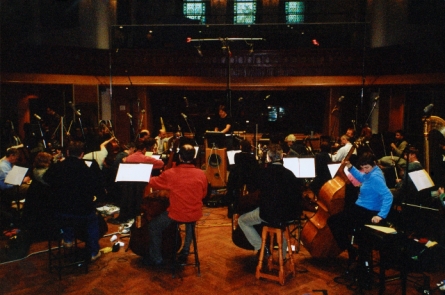 n, I sit here and
reflect, thinking: “Oh my God, I could have done better than
that!” The other strange thing is that, when you listen to
your work after you had a great experience writing, recording
and mixing it, you start questioning it. “Is it really that
good?” One or two years later, you get back to it and think:
“Wow, did I write that?” I do believe that if I can write a
few good pieces in every score, I am happy. There are pieces
in a score that just do their job because you are writing the
music for a picture and I don’t sit here writing a work by Guy
Farley: This is me, this is my concept, this is my work, I am
answerable to myself and that’s it. I am working on something
and I think about what the producers and the director said. I
am reacting to the picture I am looking at but I am
considering all these things and my music has to serve the
picture. I know people who wanted to release my score to
“Tsotsi”, which is such a very strong film and so
character-driven that I was never able to breathe or feel
free. So when you listen to the soundtrack you will notice
that everything I did was supporting a scene. That was the
reason why I decided not to release it because I wouldn’t want
to listen to it on CD. I like the main theme and the wonderful
musicians but there are the scores of mine that I wouldn’t
listen to. I would listen to “Modigliani”. n, I sit here and
reflect, thinking: “Oh my God, I could have done better than
that!” The other strange thing is that, when you listen to
your work after you had a great experience writing, recording
and mixing it, you start questioning it. “Is it really that
good?” One or two years later, you get back to it and think:
“Wow, did I write that?” I do believe that if I can write a
few good pieces in every score, I am happy. There are pieces
in a score that just do their job because you are writing the
music for a picture and I don’t sit here writing a work by Guy
Farley: This is me, this is my concept, this is my work, I am
answerable to myself and that’s it. I am working on something
and I think about what the producers and the director said. I
am reacting to the picture I am looking at but I am
considering all these things and my music has to serve the
picture. I know people who wanted to release my score to
“Tsotsi”, which is such a very strong film and so
character-driven that I was never able to breathe or feel
free. So when you listen to the soundtrack you will notice
that everything I did was supporting a scene. That was the
reason why I decided not to release it because I wouldn’t want
to listen to it on CD. I like the main theme and the wonderful
musicians but there are the scores of mine that I wouldn’t
listen to. I would listen to “Modigliani”.
Q
:
”Modigliani” is interesting because the movie tries to
tell the story of the artist but can’t be accurate because of
the lack of information about Modigliani. The music fits quite
well to this approach in its concept because in some scenes
you used quite modern music with i.e. beat-boxing which didn’t
exist at the time the movie is set in. The music is not
authentic.
G.
F.:
That’s true. There weren’t any rules on it. It was a problem
though when it got released in France. There were people who
had a problem that the movie is presenting itself as a true
story when it wasn’t. They thought that a song like “La vie en
rose”, which was written 30 or 40 years later, shouldn’t have
been in the film. The director loved it. He loved what it did
to picture. If I was rescoring the film today, I would have
said: “Let me orchestrate ‘Clair de Lune’ for that scene”. For
the painting montage – which was totally made up – they wanted
this modern piece of music and I worked with the artist Sasha
Lazard, who has a beautiful voice, and we just went with it.
You have to make decisions and sometimes you get the things
right and sometimes you don’t. If you read some comments on
that sequence, there are some people who love it, who die for
it and then there are people who think it’s terrible and even
criminal because it ruins the whole film. I think most people
love it though. I had a rough time with that.
Q
:
But you agreed with that concept of using the beat-box
music?
G.
F.: What else could I
have done over that sequence?
Q
:
I found this montage with the modern music quite
distracting…
G.
F.: I
understand that but if I took that music out and you watch the
sequence you’d sit there and think: “Wow, this is like a
MTV-video” in the way it is cut and in the way it presents
itself. If it would have been cut in a different way, I could
have scored it. The thing is that there are no rules to film
music or even film making. Either it works or it doesn’t. One
of the luxuries a director has is he can put whatever music on
his movie that he wants: Woody Allen, Quentin Tarantino etc.
He can choose whatever he wants to. It’s not my favorite
sequence in the film. I took a song that the director liked
and remixed it in this studio but it was completely outside of
the score.
Q
:
So it was the director’s idea to take a modern piece
of music for that sequence?
G. F.: Yes
and do you know why? He said: “At the time, these people were
the most modern artists on the planet and I want to reflect
that what these guys are doing is what the most modern artists
are doing today. I want to reflect this modernity.” I don’t
know whether people buy that or not. The editor knew the
singer and so we ended up doing this song together. Actually,
we did two tracks for that sequence. “Modigliani” was a big
score to do and I was still relatively young and naive in
2004. I feel different today. I am a different person today. I
am more confident about my art. Confident enough to disagree
with a director and to say to him: “I don’t think this will
work and if you want this, maybe you should find somebody
else.” The one scene where they use “La vie en rose”, I’d
definitely say today: “Let me do an arrangement of Ravel or
Debussy because I think it would work better than a piece
which was written 30 or 40 years after the
event.”
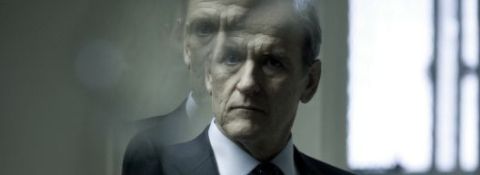
Q
:
In the sequence where we can see Modigliani having
visions with people dancing in the streets and wearing masks,
we hear quite modern Avant-garde-music which sounds a bit like
Penderecki. However, you studied Penderecki first in 2008 for
“The Broken”, didn’t you?
G. F.: I am a huge fan of
Penderecki. I read a lot of those scores because the director
of “The Broken” said: “I want something very different here. I
don’t want traditional film music, I want you to do something
really different, using an orchestra.” Actually, I found more
inspiration in Penderecki than I did anywhere else and I
looked on a lot of modern composers like Boulez or Varese or
Schnittke. This was music that I had known before but never
really connected with.
What amazed me
was how totally open I was to everything they were doing. The
education I got from studying their scores was an education I
wouldn’t have got anywhere else. Studying the orchestration,
the sound-design that Penderecki created, gave me the first
idea and the original sound for my score that convinced the
director. For the scene in “Modigliani”, I just wrote the
music. I felt it and wrote it without having studied modern
music before. For “The Broken”, I wrote down certain sounds
that I had read and specific colors. It was all about
sound-colors and how to manipulate an orchestra. The most
exciting thing on “The Broken” was trying out things that I
had never done before with an orchestra and some cues I could
only write out by hand and give them to my orchestrator,
telling him what I’d like the orchestra to do and how the
musicians have to do it. It was extremely exciting doing it. I
remember writing one cue with bass harmonics on a cello,
playing wonderful clusters and we started rehearsing this cue
and I heard this sound and I couldn’t believe it. It was such
a beautiful sound! “Where does this sound come from?”
Q
:
You didn’t know how the music is going to sound when
you wrote it?
G.
F.: When
I wrote it, I was thinking about what I wanted the musicians
to do. I talked to a cellist about bass-harmonics and I had a
wonderful book here on bass-playing and so I invented these
certain clusters. Furthermore, I’d seen some very modern piece
of work performed on television. It was all about ice. All the
instruments reflected the ice. I remember that I loved that
sound. “The Broken” gave me the opportunity to try out all
these sounds. It is pure sound-design. It is hugely
interesting how you can take a single sound and do the
slightest thing to it and it affects somebody. Hans Zimmer did
a very clever thing in his score for “Batman” with the motif
for the Joker where the cello plays a single note which is
basically a very slow glissando.
Q
:
I thought it was very unusual to use Arabic
instruments in the setting of
“Modigliani”.
G.
F.: The
director said to me that Modigliani and Picasso are two
bullfighters. “Think about bullfighting with the Spaniard
Picasso and the Italian Modigliani.” I had seen the film “The
Sheltering Sky” which has a beautiful score by Ryuichi
Sakamoto, featuring a scene where the Arabs clap their hands
very fast. I loved the ancient sound of that. I decided to
write music that was a bit like Nomadic North African
campfire-music but something that built intensity. There are
two scenes in “Modigliani” where you hear the ethnic
percussion when Modigliani and Picasso are fronting each
other. They are stomping their hooves and snorting. I thought
it was a great way to express that musically. I also had an
Algerian singer who sang atop of the drums, the hand-clapping
and Arabic flutes and when we recorded it, everybody was
affected and aroused by the sound. I got it wrong though on
one cue that we threw out. In one scene, there is a fancy
Chinese dress party for which I used Taiko-Drums. Andy Garcia
took a great interest in the music and called me up every week
because he is very musical himself. I sent the cue with the
Taiko-Drums over to him and he said: “I think you have drawn
s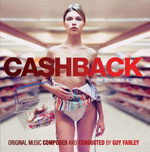 o much attention to them
that we have lost the scene.” In the end, he was right.
However, I do think that the musical description of the
bullfight between Modigliani and Picasso worked. In general, I
wasn’t tied to things. The director had ideas, I had ideas. We
threw them in, we got rid of things that didn’t work and left
things in that he was happy to leave in. o much attention to them
that we have lost the scene.” In the end, he was right.
However, I do think that the musical description of the
bullfight between Modigliani and Picasso worked. In general, I
wasn’t tied to things. The director had ideas, I had ideas. We
threw them in, we got rid of things that didn’t work and left
things in that he was happy to leave in.
Q
:
Talking about another important movie in your career:
I watched “Cashback” last week and liked it very much as a
lovely, warmhearted, funny and melancholic piece of
work.
G.
F.: I loved working on
that movie! “Cashback” is another example of where my
relationship with the film was simply perfect. It all felt
right. The director, Sean Ellis, came to me and said he loved
the piece from “Modigliani” which is called “The Hat First”.
He asked me to write something like that. It’s like everybody
asking Thomas Newman “Can you write me something like a piece
from ‘The Shawshenk Redemption’? Can you write me something
like a piece from ‘American Beauty’?” and he ends up copying
himself. I can’t stand it when people temp their movies with
my music. I find it very difficult. There was something very
special about “Cashback”. I stood in this room and just wrote
the music. It was effortless. Think about all the music I
recorded for that movie: I wrote string arrangements for
modern songs, I arranged the aria “Casta Diva”, I wrote the
original score and we recorded all that in only four hours!
Q
:
I was quite surprised that you had enough money for an
orchestra because it is quite a small
movie.
G.
F.: Yes, I always
fight for an orchestra. Mark Isham wrote an amazing score for
“Crash” using his synthesizers. Lots of people can use
electronic instruments very well. I am a devout lover of
performers and instruments. Samples can’t play something that
sounds like a soaring violin-line. It doesn’t exist. I need a
room full of people that I can engage with, that I can watch
them pick up their bows, strike the strings, listen to the
sound of it and talk about it. I love
that.
CONTINUE TO PART
2 |
 make sure that it
also makes a good listening-experience. “The Hot Potato” is a
very generic score because it has a sound from the 60s in the
style of John Barry or Henry Mancini. I loved writing that and
I knew what I was writing. I remember saying to the director
“If we were in 1968 and you would got John Barry to write the
score, that’s what I want it to sound like.” And the director
was absolutely crazy about that idea and let me do my thing.
make sure that it
also makes a good listening-experience. “The Hot Potato” is a
very generic score because it has a sound from the 60s in the
style of John Barry or Henry Mancini. I loved writing that and
I knew what I was writing. I remember saying to the director
“If we were in 1968 and you would got John Barry to write the
score, that’s what I want it to sound like.” And the director
was absolutely crazy about that idea and let me do my thing.
 Q
Q
 Q
Q
 n, I sit here and
reflect, thinking: “Oh my God, I could have done better than
that!” The other strange thing is that, when you listen to
your work after you had a great experience writing, recording
and mixing it, you start questioning it. “Is it really that
good?” One or two years later, you get back to it and think:
“Wow, did I write that?” I do believe that if I can write a
few good pieces in every score, I am happy. There are pieces
in a score that just do their job because you are writing the
music for a picture and I don’t sit here writing a work by Guy
Farley: This is me, this is my concept, this is my work, I am
answerable to myself and that’s it. I am working on something
and I think about what the producers and the director said. I
am reacting to the picture I am looking at but I am
considering all these things and my music has to serve the
picture. I know people who wanted to release my score to
“Tsotsi”, which is such a very strong film and so
character-driven that I was never able to breathe or feel
free. So when you listen to the soundtrack you will notice
that everything I did was supporting a scene. That was the
reason why I decided not to release it because I wouldn’t want
to listen to it on CD. I like the main theme and the wonderful
musicians but there are the scores of mine that I wouldn’t
listen to. I would listen to “Modigliani”.
n, I sit here and
reflect, thinking: “Oh my God, I could have done better than
that!” The other strange thing is that, when you listen to
your work after you had a great experience writing, recording
and mixing it, you start questioning it. “Is it really that
good?” One or two years later, you get back to it and think:
“Wow, did I write that?” I do believe that if I can write a
few good pieces in every score, I am happy. There are pieces
in a score that just do their job because you are writing the
music for a picture and I don’t sit here writing a work by Guy
Farley: This is me, this is my concept, this is my work, I am
answerable to myself and that’s it. I am working on something
and I think about what the producers and the director said. I
am reacting to the picture I am looking at but I am
considering all these things and my music has to serve the
picture. I know people who wanted to release my score to
“Tsotsi”, which is such a very strong film and so
character-driven that I was never able to breathe or feel
free. So when you listen to the soundtrack you will notice
that everything I did was supporting a scene. That was the
reason why I decided not to release it because I wouldn’t want
to listen to it on CD. I like the main theme and the wonderful
musicians but there are the scores of mine that I wouldn’t
listen to. I would listen to “Modigliani”.

 o much attention to them
that we have lost the scene.” In the end, he was right.
However, I do think that the musical description of the
bullfight between Modigliani and Picasso worked. In general, I
wasn’t tied to things. The director had ideas, I had ideas. We
threw them in, we got rid of things that didn’t work and left
things in that he was happy to leave in.
o much attention to them
that we have lost the scene.” In the end, he was right.
However, I do think that the musical description of the
bullfight between Modigliani and Picasso worked. In general, I
wasn’t tied to things. The director had ideas, I had ideas. We
threw them in, we got rid of things that didn’t work and left
things in that he was happy to leave in.
